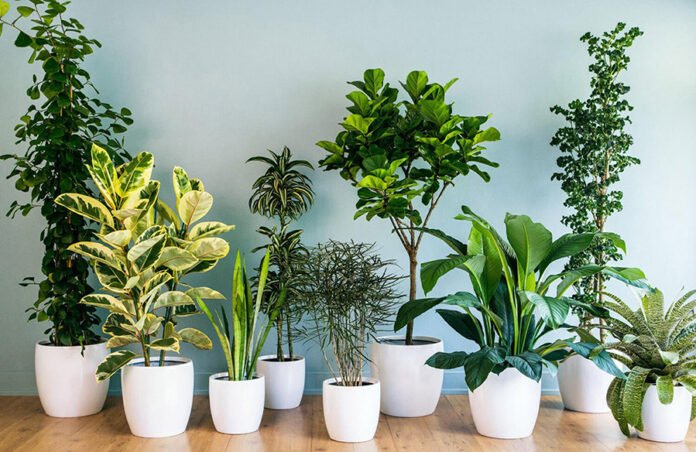Introduction
Plants are one of the most important and fascinating autotrophs on Earth. They play a crucial role in our ecosystem, providing oxygen, food, and shelter for countless species of animals. Despite their importance, many people are not aware of the intricacies of plant biology and how they function.
What is a Plant?
Plants are autotrophs with some exceptions like insectivorous, Cuscuta, etc. They belong to the kingdom Plantae. They are characterised by their ability to produce their food through photosynthesis, which involves using energy from the sun to convert carbon dioxide and water into glucose and oxygen.
Most plants are multicellular, meaning they are made up of many cells and have a complex structure that allows them to grow and reproduce.
Types of Plants
Plants are classified into several different groups based on their characteristics. The main types of plants are
Non-vascular plants
These are small, simple plants that do not have a vascular system to transport water and nutrients. Examples include mosses and liverworts.
Vascular plants
These are more complex plants that have a system of tubes and vessels to transport water and nutrients throughout the plant. There are two types:
- Seedless vascular plants:Seedless vascular plants are a group of plants that have specialised vascular tissue for the transport of water and nutrients but do not produce seeds for reproduction. They reproduce by spores. Examples of seedless vascular plants are Spike mosses, horsetails, and club mosses.
- Seed plants:These are plants that produce seeds, which are used for reproduction. They are classified as follows:
- Gymnosperms: These are plants that produce naked seeds that are not enclosed in a fruit. Examples include pine trees and spruces.
- Angiosperms: These are plants that produce seeds that are enclosed in a fruit. They make up the majority of plant species and include everything from grasses to trees.
Morphology of Plants
Plants have a complex morphology, with many different structures that serve different functions. They are:
- Root:The root is part of the plant that is usually found below the ground. It anchors the plant in place and absorbs water and nutrients from the soil. It also helps plants to store food.
- Stem:The stem is the main supporting structure of the plant. It carries water and nutrients from the roots to the leaves and flowers and also supports the leaves and flowers.
- Leaf:The leaf is part of the plant that is responsible for photosynthesis. It absorbs light and carbon dioxide and produces oxygen and glucose.
- Inflorescence:It is the structure that holds the flowers of the plant. It can contain single or multiple flowers.
- Flower:It is the reproductive part of the plant which contains the male and female reproductive organs and is responsible for producing seeds. Flowers can come in many shapes and sizes, and their colours and scents attract pollinators like bees and butterflies.
- Fruit:The fruit is the structure that surrounds and protects the seeds of the plant. It is usually part of the plant that we eat, and it can come in many different forms, from juicy berries to hard nuts.
- Seed:The seed is the reproductive unit of the plant. It contains an embryo and a supply of nutrients, which allows it to germinate and grow into a new plant.
Nutrition in Plants
Plants need nutrients to grow and thrive. They get these nutrients from the soil, air, and water around them. Plants also need carbon dioxide from the air and water from the soil to carry out photosynthesis.
There are two main modes of nutrition in plants—autotrophic and heterotrophic.
- Autotrophic plants make their food through photosynthesis, using energy from the sun to convert carbon dioxide and water into glucose.
- Heterotrophic plants like parasitic plants Cuscuta, cannot make their food and must obtain nutrients by consuming other organisms or organic matter in the soil.
- Some plants are also partially heterotrophic like insectivorous plants that can make their food but also obtain nutrients from other sources.
Anatomy of Plants
Plants have complex anatomy, with many different tissues and structures that serve different functions. Important types of plant tissue are:
- Epidermal tissue:This is the outermost layer of the plant, which protects it from the environment.
- Ground tissue:This is the tissue that makes up the bulk of the plant, and it is responsible for photosynthesis and storage.
- Vascular tissue:This is the tissue that transports water and nutrients throughout the plant.
Plants also have specialised structures, like the xylem and phloem, which are responsible for transporting water and nutrients, and the stomata, which are pores on the surface of leaves that allow gases to pass in and out of the plant.
FAQs
Q1. What is the biggest plant in the world?
Ans. The biggest plant in the world is the giant sequoia tree, which can grow up to 100 metres tall and have a trunk diameter of up to 9 metres.
Q2. How do plants reproduce?
Ans. Plants reproduce sexually through the production of seeds. The male reproductive organ produces pollen, which is transferred to the female reproductive organ by pollinators like bees and butterflies. Once fertilised, the ovules in the female reproductive organ develop into seeds.
Q3. Can plants feel pain?
Ans. Plants do not have a nervous system, so they cannot feel pain like animals do.
Q4. How do plants defend themselves from predators?
Ans. Plants have developed various methods to protect themselves from animals that might want to harm them. Some plants produce toxic chemicals that deter animals from eating them, while others have thorns or spines that make them difficult to eat.
Q5. How long can plants live?
Ans. Plants can live for many years, depending on the species. Some plants, like the bristlecone pine, can live for thousands of years, while others, like annuals, only live for one season.
